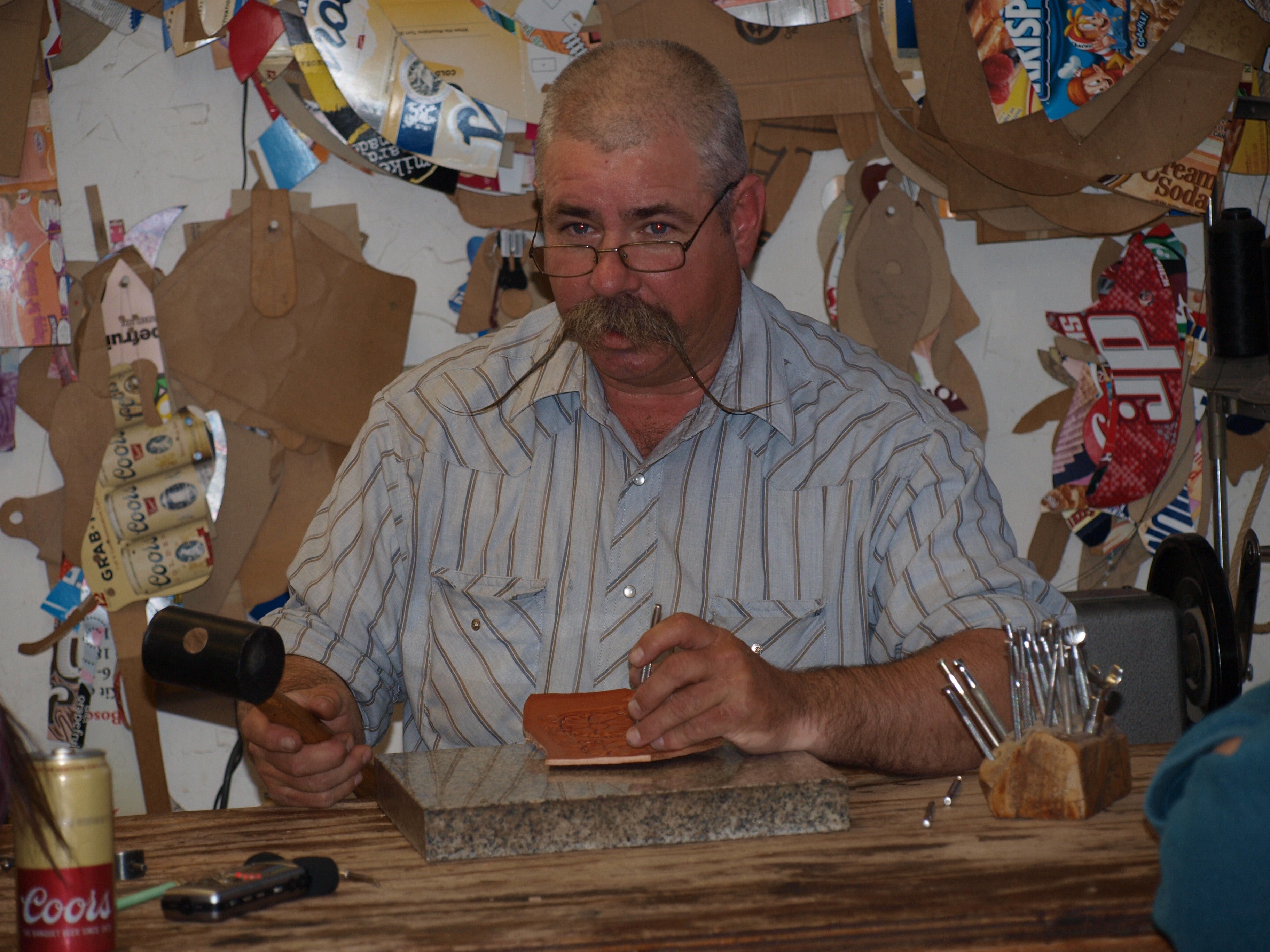 | Traditional Skill/Art Craft: Saddle Making Years Awarded: 2018 Contact Information: Phone: (541)495-2334 Website: http://mckaysaddlery.com/ |
ARTIST BIOGRAPHY
Steve McKay is a buckaroo and traditional saddle maker. Working buckaroos around the state of Oregon consider McKay the "go-to" for rugged, functional gear. He first learned his trade of saddle making by repairing all of his own tracks that he tore up riding colts and rough string. McKay also learned some traditional techniques from fellow artist Len Babb II.
Steve built his first saddle in 1991 and started building saddles full-time in 1998. He has built every piece of leather gear that goes on a horse and cowboy except for boots. To meet his production goals, Steve likes to build one or two flower-tooled saddles a year, four or five rough-out saddles, and that many, or double that, in basket-stamped saddles. When he tools, Steve doesn't use pre-made patterns. Instead, he hand draws all his patterns; just an added touch that makes his saddles one-of-a-kind.
APPRENTICE BIOGRAPHY- Warren Clayton Johnson 2018
Warren Clayton Johnson grew up on ranches in Nevada, California, and Oregon and has been working on them since he was a child with his father. Growing up in buckaroo culture he has always had an interest in leatherworking and making his own gear, and before this apprenticeship began making his own tack. His apprenticeship with Steve McKay will be making a saddle form scratch.
Q+A WITH THE MENTOR ARTIST
Describe your traditional art.
Body
I repair and build all types of horse and buckaroo gear for working buckaroos throughout the Great Basin Community. For saddle making, I get the hid locally and cut out every single piece. I have to tool the leather, strip those off, create rigging out of the hid, and form the skirts. I then put everything together, hang the rigging, and make sure that everything looks good and works properly.
How did you come to learn this tradition?
Body
I have learned this etiquette through a lifetime and paying attention to all the old-timers. I learned by repairing my own saddles, and the first person I worked for in this trade was Len Babb II of Paisley, Oregon, a fellow buckaroo, and saddlemaker. I started practicing this tradition in 1986, and I have been building saddles full-time since 1998. I have grown up on ranches my entire life and I started tooling leather in the fourth grade.
Why is this cultural tradition important to your community?
Body
Buckaroos depend on their gear and horses to get their jobs done on a daily basis. This gear has to be of high quality to keep the horses injury-free and comfortable.
Experience/Honors
Body
Steve has won Best of Show in Elko County at the Fair for Rawhide Braiding, and Best of Show at the Harney County Fair for a saddle entry. Steve has also won Judges Choice for a saddle entry at the Harney County Fair twice. He has been featured in the Ruralite Magazine in July 2007, and Steve was also featured in an Oregon Cultural Trust Project in Harney County. Steve has a holster on display at the Oregon Folklife Network office at the University of Oregon. He has twice mentored leather craft Senior Projects for one student from Burns High School and one from Crane High School. Steve has donated five Championship Saddles to the Jordan Valley Rodeo, and numerous raffle items to rodeo clubs, 4-H club, and rural schools.
Visit OFN's Culture Keepers Roster to learn more about the artist.
Traditional Arts Apprenticeship Program
More OFN programs
OFN main page